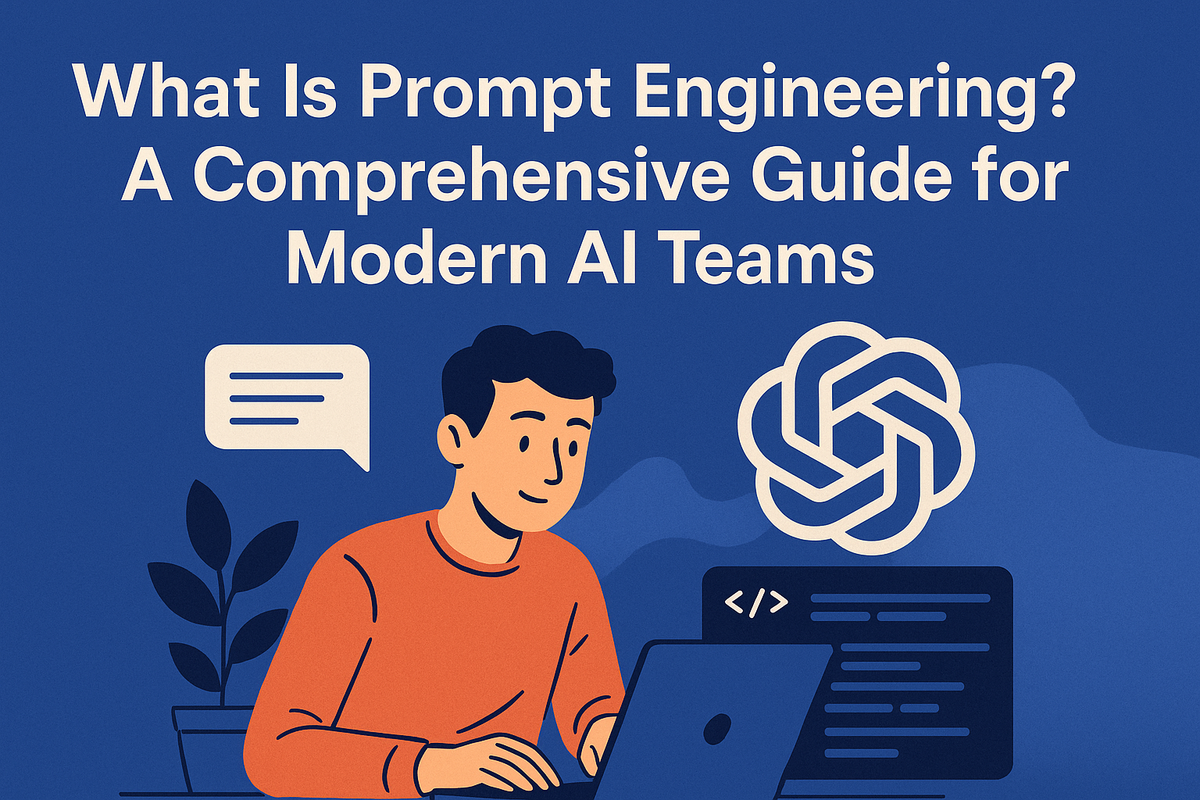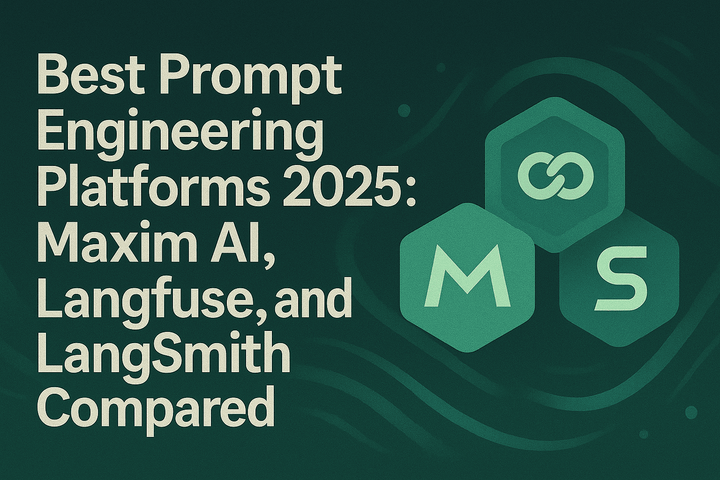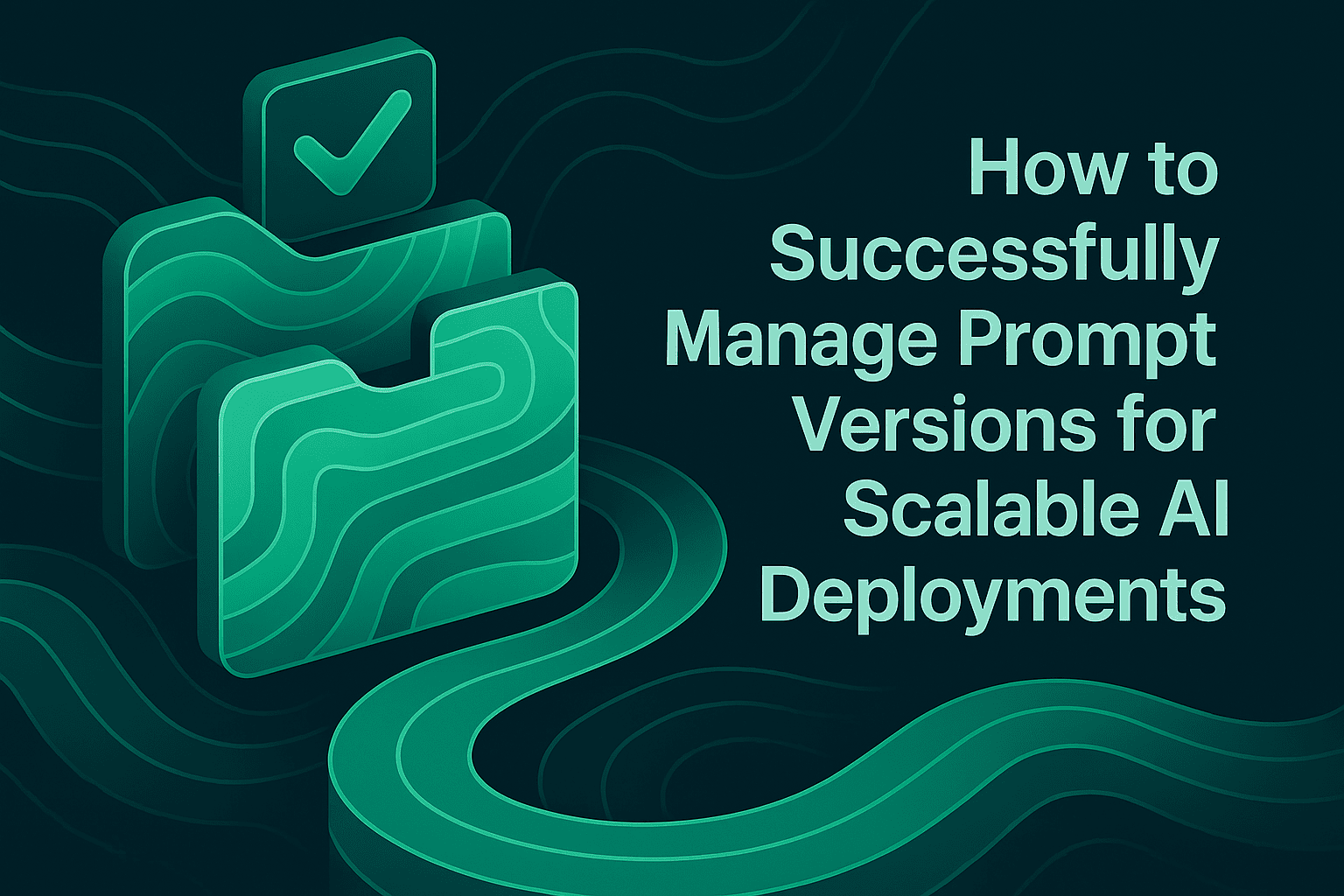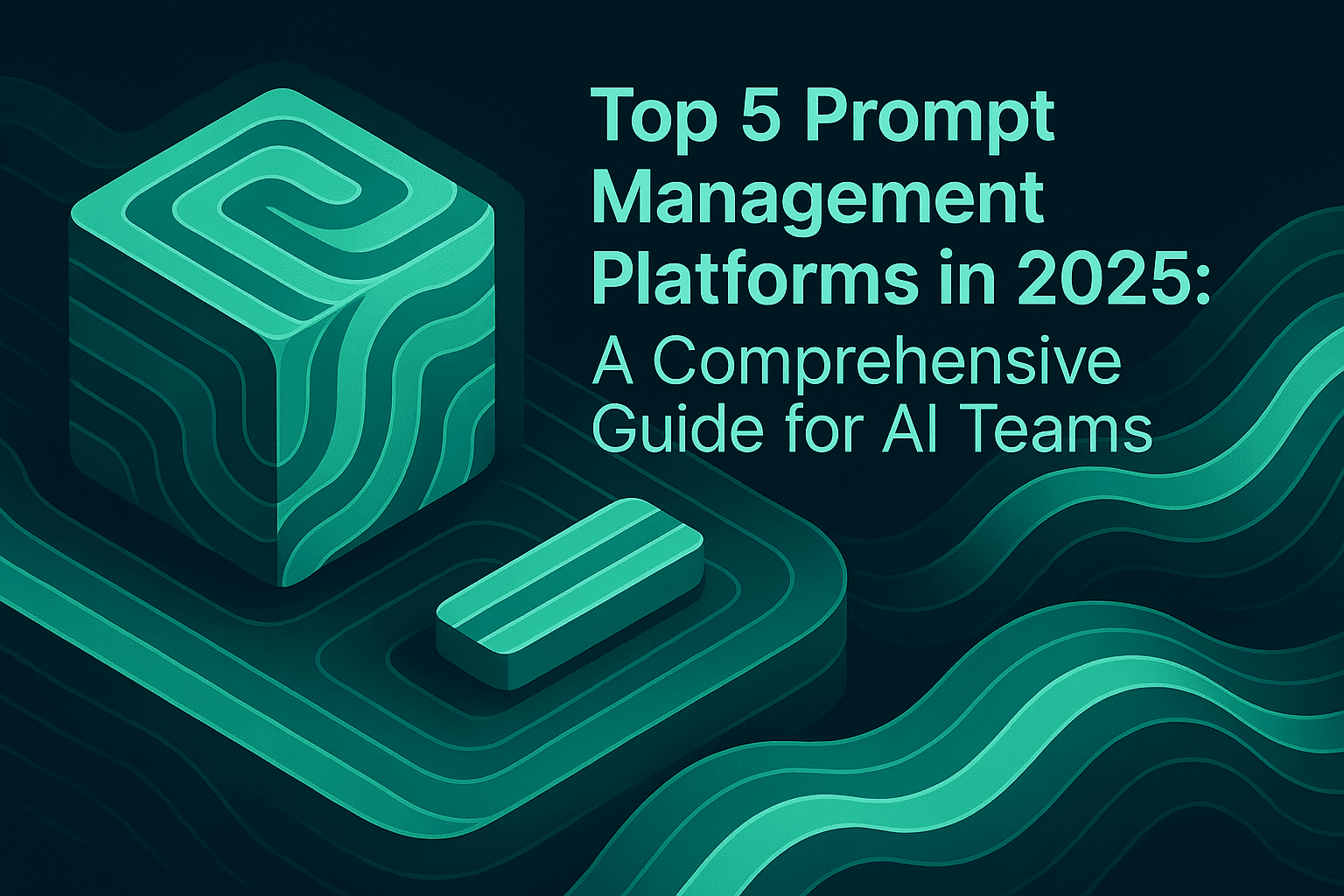What Is Prompt Engineering? A Comprehensive Guide for Modern AI Teams

Introduction
Prompt engineering has rapidly emerged as a critical discipline in the development and deployment of AI systems, particularly large language models (LLMs) and agentic workflows. As organizations strive to build reliable, context-aware, and high-performing AI solutions, the importance of crafting, refining, and managing prompts cannot be overstated. This blog offers a deep dive into the principles, practices, and tools that define prompt engineering in 2025, with actionable insights for technical teams, product managers, and AI practitioners.
Table of Contents
- What is Prompt Engineering?
- Why Is Prompt Engineering Important?
- Core Concepts in Prompt Engineering
- Prompt Engineering in Practice: Techniques and Strategies
- Evaluating Prompt Quality
- Prompt Engineering Tools and Platforms
- How Maxim AI Powers Prompt Engineering Workflows
- Best Practices for Enterprise-Grade Prompt Engineering
- Case Studies: Real-World Impact
- Further Reading and Resources
- Conclusion
What Is Prompt Engineering?
Prompt engineering refers to the systematic process of designing, optimizing, and managing the instructions or inputs provided to AI models—primarily LLMs—to elicit desired outputs. At its core, it blends linguistic expertise, domain knowledge, and technical experimentation to maximize model performance and reliability.
A prompt can be as simple as a question or as complex as a structured template guiding multi-turn conversations, tool integrations, or retrieval-augmented generation (RAG) workflows. Effective prompt engineering ensures that models behave predictably and deliver outputs that align with user intent and business requirements.
Why Is Prompt Engineering Important?
Unlocking Model Capabilities
Modern LLMs are highly capable but sensitive to prompt phrasing, context, and structure. Subtle changes in wording can dramatically impact output quality, factuality, and relevance. Prompt engineering unlocks these capabilities, allowing teams to:
- Improve accuracy and consistency
- Reduce hallucinations and biases
- Adapt models to specific domains or tasks
- Optimize for efficiency and cost
Bridging the Gap Between Models and Use Cases
LLMs are generalists by design. Prompt engineering tailors their behavior to real-world use cases—customer support, document analysis, code generation, and more—by providing precise instructions and context.
Enabling Responsible AI
Thoughtful prompt design is essential for mitigating risks such as toxicity, bias, and misinformation. By iteratively testing and refining prompts, teams can enforce safety guardrails and ensure compliance with ethical standards (AI agent quality evaluation).
Core Concepts in Prompt Engineering
Prompt Types
- Zero-shot prompts: Direct instructions without examples.
- Few-shot prompts: Instructions supplemented with examples to guide model behavior.
- Chain-of-thought prompts: Step-by-step reasoning embedded in the prompt to encourage logical outputs.
- Tool-augmented prompts: Instructions that invoke external tools or APIs within the model workflow.
Context Management
Effective prompts often leverage external context—documents, databases, or user history—to enhance relevance and accuracy. Context sources can be dynamically injected using APIs or retrieved through RAG pipelines (Prompt IDE).
Structured Outputs
Modern prompt engineering increasingly demands structured outputs—JSON, XML, or custom schemas—to facilitate downstream processing and integration.
Prompt Engineering in Practice: Techniques and Strategies
Iterative Experimentation
Prompt engineering is inherently experimental. Teams iterate rapidly, testing variations across models, tasks, and data. Platforms like Maxim AI offer dedicated playgrounds for prompt experimentation, enabling side-by-side comparisons and version management (Experimentation).
Prompt Chaining
For complex workflows, prompts are chained together—each step feeding into the next—to simulate multi-turn conversations, reasoning, or task decomposition (Agent Simulation Evaluation).
Versioning and Collaboration
As prompts evolve, robust versioning and collaboration tools are essential. Maxim AI’s CMS allows teams to organize, tag, and track changes with author attribution and comments, ensuring reproducibility and auditability (Prompt versioning).
Deployment and Integration
Once optimized, prompts must be deployed into production environments. Decoupling prompts from code enables rapid iteration and A/B testing, minimizing downtime and risk (Deployment and integration).
Evaluating Prompt Quality
Metrics and Benchmarks
Evaluating prompt quality requires objective metrics—accuracy, faithfulness, toxicity, and task-specific KPIs. Teams leverage prebuilt and custom evaluators to score outputs across large test suites (AI agent evaluation metrics).
Human-in-the-Loop Evaluation
Automated metrics are valuable but limited. Human raters provide deeper insights, grading outputs for factuality, bias, and user satisfaction. Maxim AI streamlines human review workflows, integrating seamlessly with auto-evals (Human annotation).
Continuous Monitoring
Prompt performance must be monitored in production. Real-time observability tools track metrics, latency, and cost, triggering alerts on regressions or anomalies (Agent observability).
Prompt Engineering Tools and Platforms
IDEs and Playgrounds
Modern platforms provide multimodal playgrounds, supporting closed, open-source, and custom models. Features include:
- Side-by-side prompt comparison
- Native support for structured outputs
- Integration with external context sources (Prompt IDE)
Experimentation and Evaluation Engines
Automated engines enable bulk testing across combinations of prompts, models, and tools, surfacing optimal configurations (Simulation and evaluation).
Observability and Monitoring
Comprehensive tracing and logging tools visualize agent interactions, debug issues, and export data for analysis (Traces).
Integration with Enterprise Workflows
Leading platforms support SDKs, APIs, and CI/CD automation, ensuring seamless integration with existing stacks (Enterprise-ready features).
How Maxim AI Powers Prompt Engineering Workflows
Maxim AI is purpose-built to accelerate every stage of prompt engineering, from experimentation to deployment and monitoring. Key features include:
- Prompt IDE: Multimodal playground with structured output support, context integration, and version control (Prompt IDE).
- Experimentation engine: Bulk test prompts and models, automate evaluation, and collaborate via shareable reports (Experimentation).
- Agent simulation and evaluation: Simulate multi-turn workflows, test across scenarios, and visualize results (Agent simulation & evaluation).
- Observability suite: Real-time tracing, human annotation pipelines, and production monitoring (Agent observability).
- Enterprise-grade security: In-VPC deployment, SOC 2 Type 2 compliance, custom SSO, and role-based access controls (Enterprise-ready).
For a detailed walkthrough, refer to Maxim’s documentation and evaluation workflows for AI agents.
Best Practices for Enterprise-Grade Prompt Engineering
- Systematic Experimentation: Use structured test suites and versioning to ensure reproducibility.
- Collaborative Workflows: Involve cross-functional teams—engineering, product, and domain experts—in prompt design and review.
- Continuous Evaluation: Monitor prompt performance in production, leveraging both automated and human-in-the-loop metrics.
- Security and Compliance: Enforce strict data governance, access controls, and compliance standards.
- Scalability: Design workflows to accommodate large-scale experimentation and deployment.
Case Studies: Real-World Impact
- Comm100: Shipping Exceptional AI Support: Maxim AI enabled rapid iteration and robust evaluation, transforming support workflows.
- Clinc: Elevating Conversational Banking: Advanced prompt engineering powered reliable, domain-specific banking agents.
- Atomicwork: Scaling Enterprise Support: Seamless collaboration and monitoring ensured consistent agent quality.
Further Reading and Resources
- Maxim AI Blog: In-depth articles on agent evaluation, prompt metrics, and workflow automation.
- Maxim AI Docs: Comprehensive platform documentation.
- Stanford CRFM: Research on foundation models and prompt engineering.
- OpenAI Cookbook: Practical guides and examples for prompt design.
Conclusion
Prompt engineering is the cornerstone of successful AI agent development. By adopting systematic, collaborative, and data-driven approaches, teams can unlock the full potential of LLMs and agentic workflows. Platforms like Maxim AI provide the infrastructure needed to experiment, evaluate, and monitor prompts at scale, driving faster innovation and higher-quality outcomes. Whether you are an engineer, data scientist, or product leader, investing in prompt engineering is essential for building trustworthy, impactful AI solutions.
For more information or to get started, explore Maxim AI and book a demo today.


